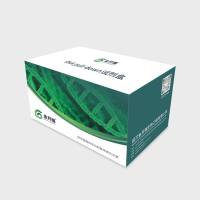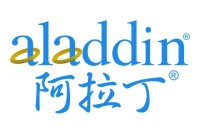Affinity Purification of Proteins Binding to GST Fusion Proteins
互联网
- Abstract
- Table of Contents
- Materials
- Figures
- Literature Cited
Abstract
This unit describes the use of proteins fused to glutathione?S ?transferase (GST fusion proteins) to affinity purify other proteins, a technique also known as GST pulldown purification. The describes a strategy in which a GST fusion protein is bound to agarose affinity beads and the complex is then used to assay the binding of a specific test protein that has been labeled with [35 S]methionine by in vitro translation. However, this method can be adapted for use with other types of fusion proteins; for example, His6 , biotin tags, or maltose?binding protein fusions (MBP), and these may offer particular advantages. A describes preparation of an E. coli extract that is added to the reaction mixture with purified test protein to reduce nonspecific binding.
Table of Contents
- Strategic Planning
- Basic Protocol 1: GST Fusion Protein–Affinity Purification
- Support Protocol 1: Preparation of E. Coli Extract
- Reagents and Solutions
- Commentary
- Figures
Materials
Basic Protocol 1: GST Fusion Protein–Affinity Purification
Materials
Support Protocol 1: Preparation of E. Coli Extract
Materials
|
Figures
-
Figure 20.2.1 Schematic representation of GST pulldown purification of proteins. View Image -
Figure 20.2.2 Purification of an interacting test protein from a crude E. coli extract (−80)/(+80). Crude E. coli extracts from control cells (−80) or cell sexpressing the yeast negative regulator Gal80p (+80) were incubated with a GST fusion protein containing a 34‐amino‐acid fragment that included the activation domain of the yeast transactivator Gal4p (GST‐34). After extensive washing, the beads were boiled in 2× SDS sample buffer and analyzed by SDS‐PAGE. Proteins were visualized by Coomassie blue staining. This gel shows that the retained fraction includes GST that has lost the 34‐mer bait protein. Gal80p binds to GST‐34 as a dimer, hence the molar excess seen in the +80 retained fraction. Photograph provided by Karsten Melcher. View Image -
Figure 20.2.3 Replication in vitro of in vivo Gal4p/Gal80p interactions. In the presence of 10 to 20 µg bait protein and in the absence of complex competitor protein, Gal80p binds to all the mutant Gal4p activation domains tested, even those it does not repress in vivo (data not shown). However, this figure shows that when the amount of bait protein is reduced to 4 µg and 4 mg complex competitor is included, the in vitro pulldown assay parallels the in vivo interaction seen between Gal80p and several different Gal4p activation domain mutants. Lane 1, GST alone; Lane 2, GST + wild‐type Gal4p activation domain; Lanes 3 to 7, GST + mutant Gal4p activation domains. A + indicates mutants with a positive in vivo Gal4p/Gal80p interaction; a − indicates mutants with negative in vivo Gal4p/Gal80p interaction; and ± indicates mutants with low‐level in vivo Gal4p/Gal80p interaction. Abbreviation: GST, glutathione‐ S ‐transferase. Photograph provided by Karsten Melcher. View Image
Videos
Literature Cited
| Literature Cited | |
| Agarana, C.E., Kuntz, I.D., Birkin, S., Axel, R., and Cantor, C.R. 1986. Molecular cloning and nucleotide sequence of the streptavidin gene. Nucl. Acids Res. 14:871‐882. | |
| Blanar, M.A. and Rutter, W.J. 1992. Interaction cloning: Identification of a helix‐loop‐helix zipper protein that interacts with c‐fos. Science 256:1014‐1018. | |
| Chandler, C.S. and Ballard, F.J. 1988. Regulation of the breakdown rates of biotin‐containing proteins in Swiss 3T3‐L1 cells. Biochem. J. 251:749‐755. | |
| Chen, J.‐L., Attardi, L.D., Verrijzer, C.P., Yokomori, K., and Tjian, R. 1994. Assembly of recombinant TFIID reveals differential coactivator requirements for distinct transcriptional activators. Cell 79:93‐105. | |
| Higgins, D.R. 1995. Overview of protein expression in Pichia pastoris. In Current Protocols in Protein Science (J.E. Coligan, B.M. Dunn, H.L. Ploegh, D.W. Speicher, and P.T. Wingfield, eds.) pp. 5.7.1‐5.7.16. John Wiley & Sons, New York. | |
| Johnsson, N. and Varshavsky, A. 1994. Split ubiquitin as a sensor of protein interactions in vivo. Proc. Natl. Acad. Sci. U.S.A. 91:10340‐10344. | |
| Lim, P., Rhode, M., Morris, C.P., and Wallace, J.C. 1987. Pyruvate carboxylase in the yeast pyc mutant. Arch. Biochem. Biophys. 258:219‐264. | |
| Nikolau, B.J., Wurtele, E.S., and Stumpf, P.K. 1985. Use of streptavidin to detect biotin‐containing proteins in plants. Anal. Biochem. 149:448‐453. | |
| Romanos, M.A., Clare, J.I., and Brown, C. 1995. Culture of yeast for the production of heterologous proteins. In Current Protocols in Protein Science (J.E. Coligan, B.M. Dunn, H.L. Ploegh, D.W. Speicher, and P.T. Wingfield, eds.) pp. 5.8.1‐5.8.17. John Wiley & Sons, New York. | |
| Strausberg, R.L. and Strausberg, S.I. 1995. Overview of protein expression in Saccharomyces cerevisiae. In Current Protocols in Protein Science (J.E. Coligan, B.M. Dunn, H.L. Ploegh, D.W. Speicher, and P.T. Wingfield, eds.) pp. 5.6.1‐5.6.7. John Wiley & Sons, New York. | |
| Key Reference | |
| Melcher, K. and Johnston, S.A. 1995. Gal4 interacts with TATA‐binding protein and co‐activators. Mol. Cell Biol. 15:2839‐2848. | |
| Describes binding from extracts, binding of in vitro‐translated and labeled protein, binding‐deficient mutants, correlation of in vitro and in vivo results, and determination of binding constant. |







